While the Galaxy J6 is all about offering an immersive viewing experience, the Galaxy A6 and Galaxy A6+ are about giving consumers the right mix of features taken from both the budget and mid-range Galaxy J and Galaxy A lineups. Or, well, the right price tag would be more accurate, as the new A6 and A6+ fill the gap between Samsung’s premium mid-range offerings (the A8 and A8+) and the J series devices.
The Galaxy A6+ is clearly the more interesting smartphone here. It’s got a 6-inch Infinity (18:5:9) display and also comes with a 24-megapixel front-facing camera, the highest we have seen yet on a Samsung smartphone. It also gets the leg up over the Galaxy A6 with its dual rear camera setup. You could say the A6 and A6+ are as different as the Galaxy S9 and Galaxy S9+, with the larger model getting the better features.
But the regular Galaxy S9 can still boast of flagship internals. The A6+, meanwhile, has only its cameras and that big Infinity display to set itself apart. In fact, it’s rather lacking in one key area: the chipset inside. The Snapdragon 450 SoC is all about efficiency, not unlike Samsung’s Exynos 7870 chip. For the starting price of a Galaxy A6+ (around $370/€369), the Snapdragon 450 is a bit too entry-level in capabilities, once again showing how Samsung continues to need to make important sacrifices as it attempts to fight the ever-increasing competition from Chinese manufacturers.
Then there are aspects like the microUSB port or the lack of fast charging that further work against the Galaxy A6+, so it’s ultimately up to the phone’s cameras and the Infinity display to make a solid impression. Whether they can actually do that is what we will find out in our Galaxy A6 Plus review, so let’s get started.
Galaxy A6 Plus review: Design
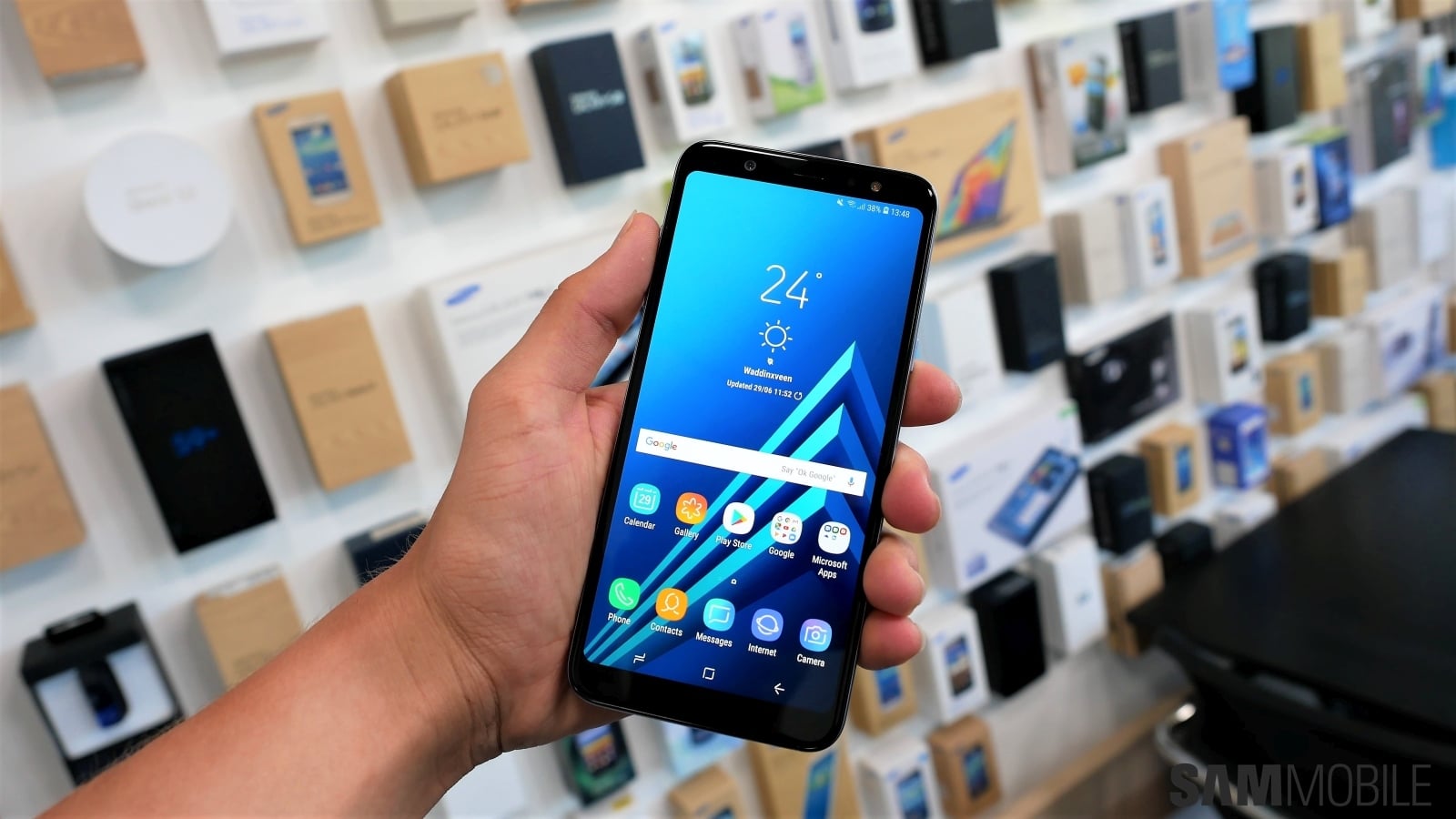
There’s no other way to say it: The Galaxy A6+ is a big, burly, and not-so-ergonomic device. It is the same size and weighs as much as the Galaxy A8+, but the metal unibody makes it less grippy and more prone to slipping out of the hand. It feels premium, though, even if the metal body is something we have seen on much cheaper Galaxy J series devices. But Samsung needs to work on reducing the size of its non-flagship phones with Infinity displays by reducing the bezels further, as there’s room to make these devices more compact.
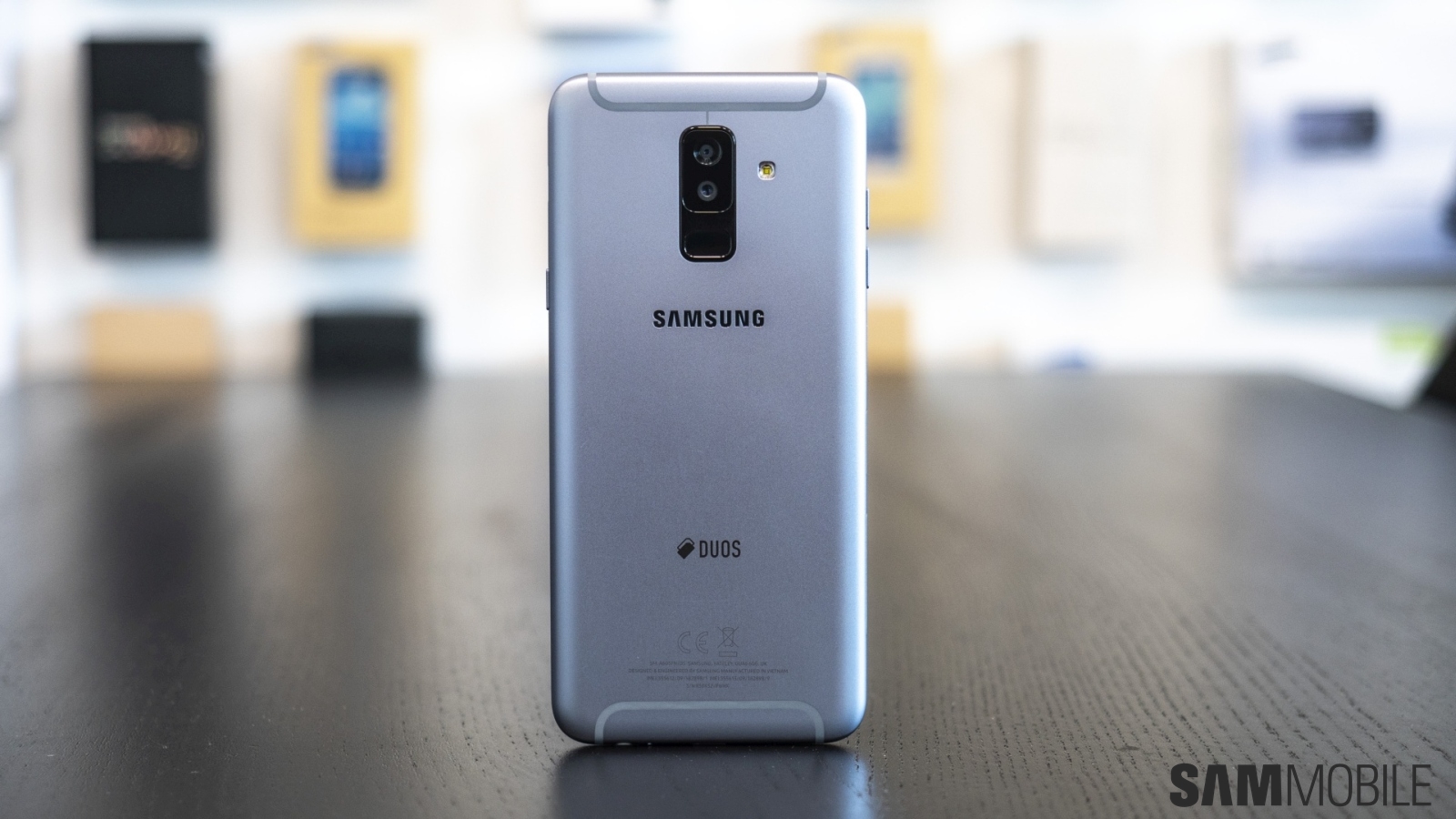
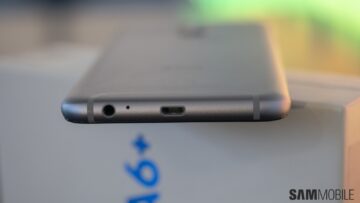


At the back, the fingerprint sensor below the vertically placed dual camera setup is easy enough to reach, but you would need to reposition the device in your hand once you tap the fingerprint reader to unlock the device. Samsung isn’t willing to move the fingerprint reader a little lower on its smartphones, so only those with really big hands would find the current position truly comfortable, especially on Galaxy devices with 6 inch and larger screens.
A note about the colors: The blue Galaxy A6+ looks amazing, but if you want the Infinity display to be truly immersive, it’s best to pick up the black version. That’s because on the non-black models, the colored edges of the phone can be visible, which ruins the experience.
Display
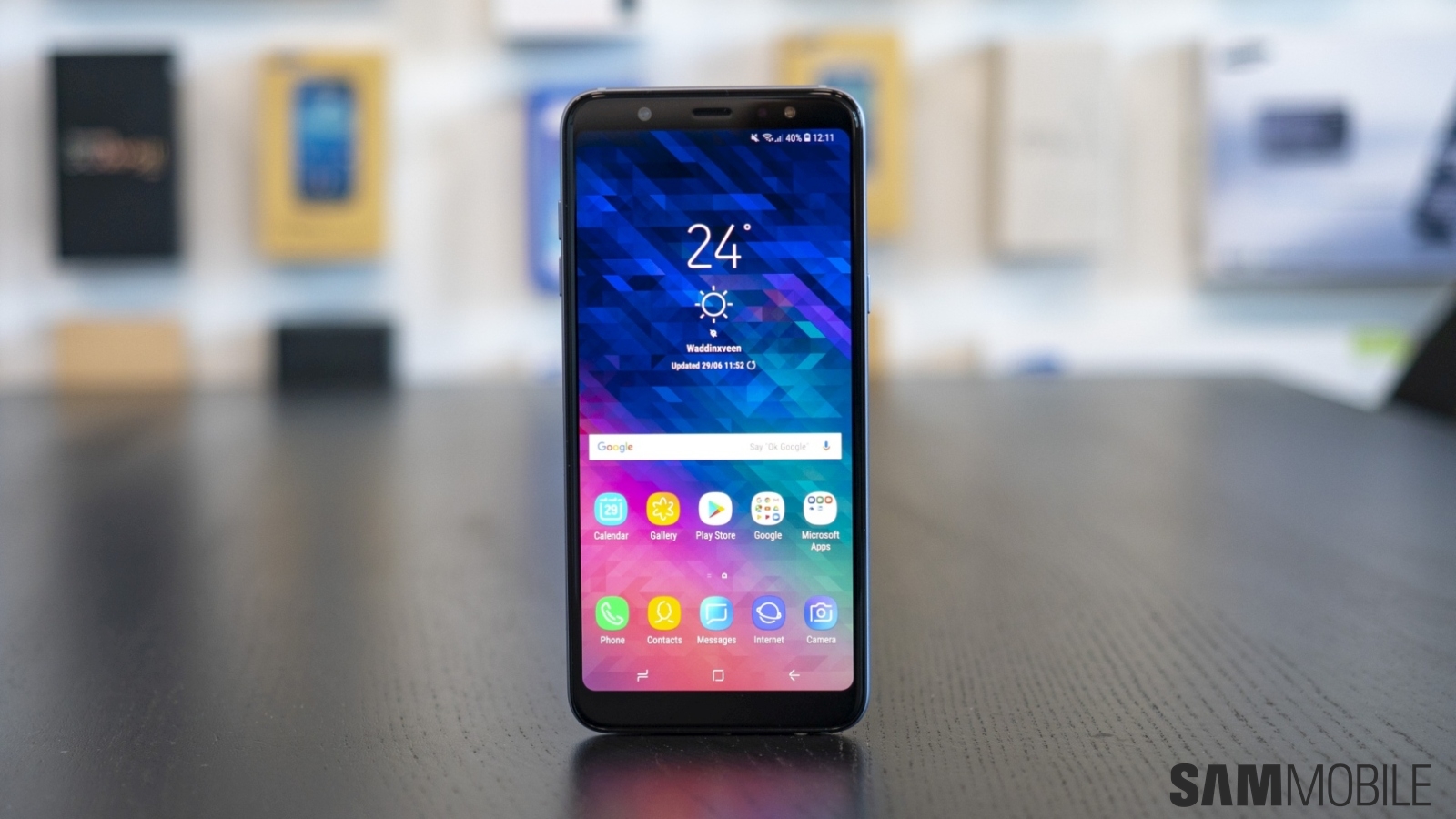
The 6-inch Super AMOLED Infinity display on the A6+ is excellent. It has vivid colors, deep blacks, and high brightness levels. The Full HD+ resolution (2220×1080 pixels) is more than sufficient to make everything look sharp. Since the front is all black, it makes for an immersive viewing experience when you’re watching videos. As I said in the design section, the bezels could be smaller. The A6+ is just a tad longer than the Galaxy S9+ despite a screen that’s 0.2 inches smaller, so shaving off the bezels a bit more on budget and mid-range Galaxy devices would further improve the attractiveness of the Infinity display.
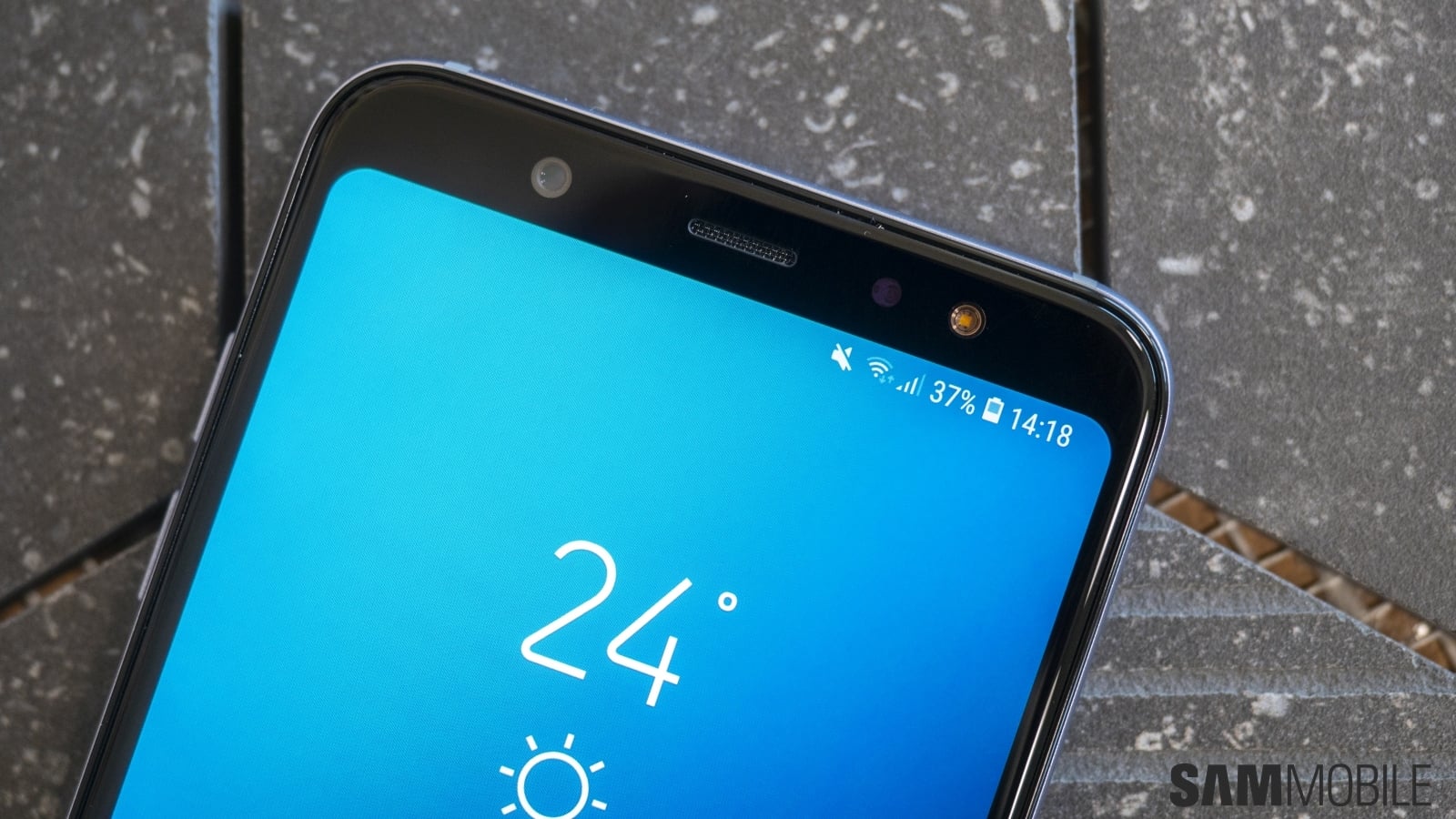
The Galaxy A6+ comes with software navigation buttons like all other Infinity display-toting devices. You can change the background color of the navigation bar and also swap the back and recents keys if you don’t like the default order. The navigation bar can be made to disappear so you have slightly higher screen estate and access the buttons by swiping up from the bottom of the display when needed.
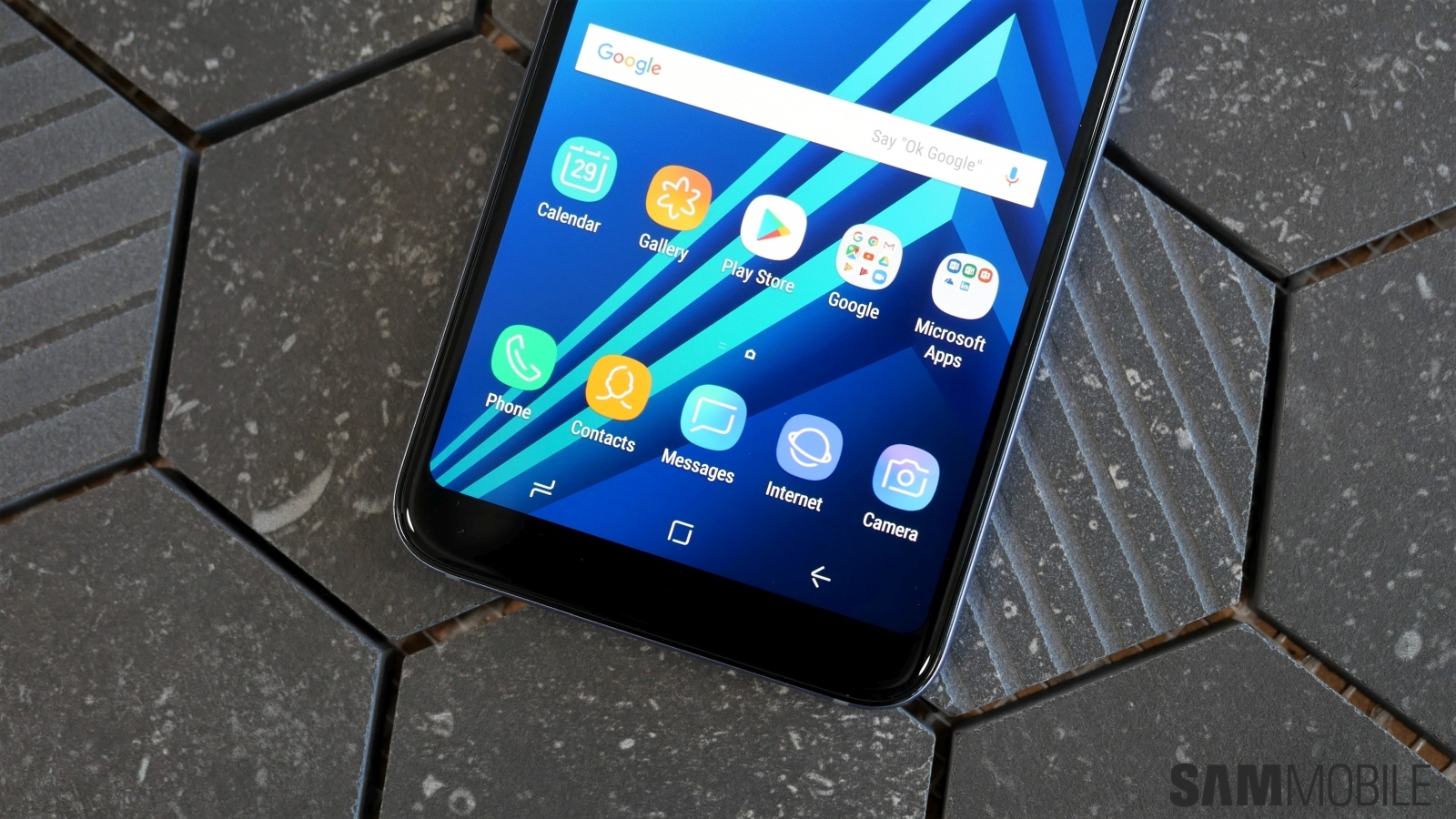
Like the Galaxy S8 or Galaxy S9, the A6+ offers customization of the screen mode as well. You can choose from the usual screen modes Samsung devices with AMOLED displays have always had, make the display’s color tone warmer or cooler, and also manually adjust the red, green, and blue values for deeper control over the overall look and feel of the screen. At night, you can enable the blue light filter to reduce eye strain and fall asleep faster.
Camera
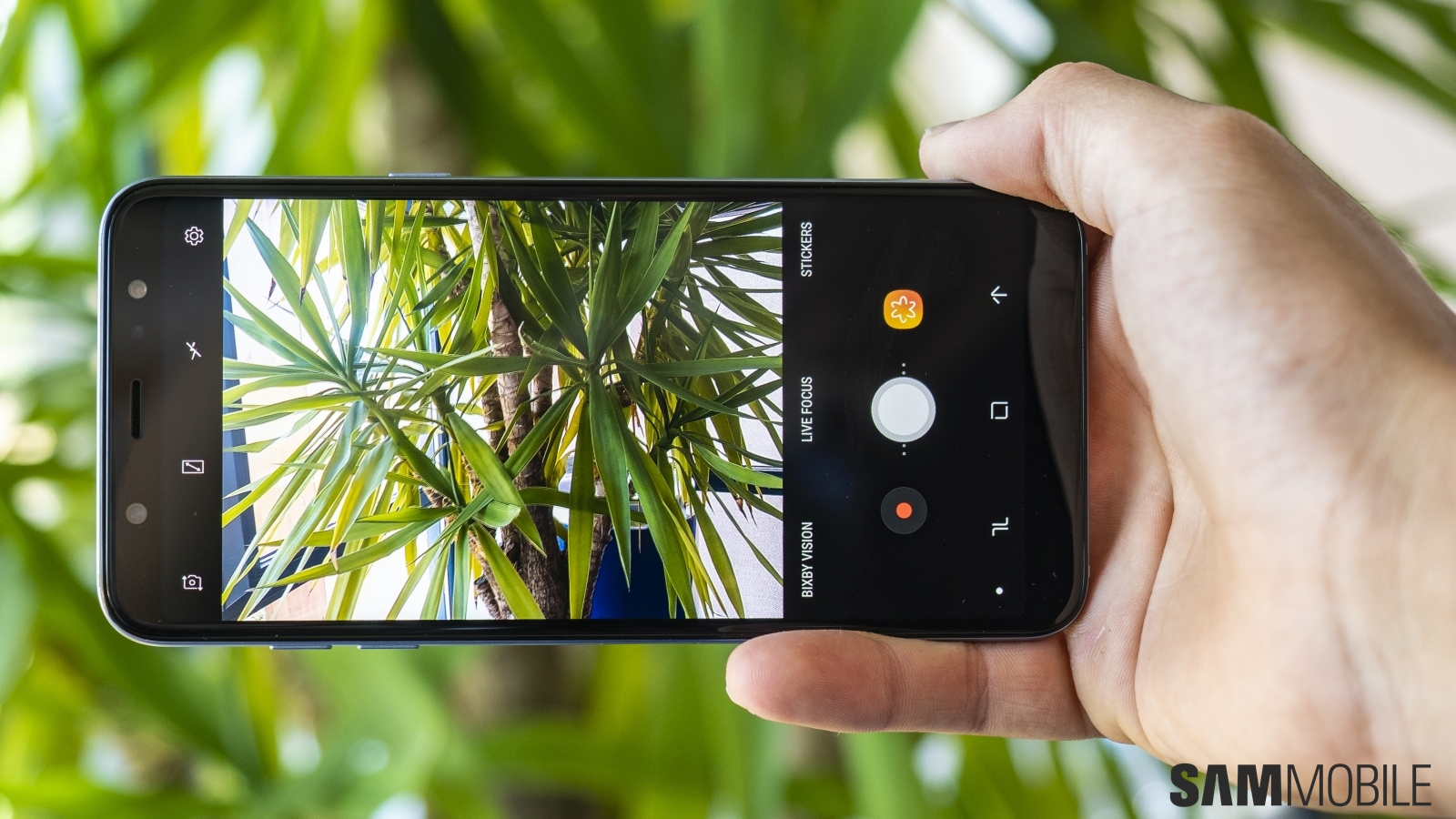
The Galaxy A6+ has a 24-megapixel front camera, and it’s also equipped with a dual camera setup at the back. Let’s talk about the front camera first. As is usually the case, an increase in megapixels doesn’t necessarily translate to more detail in pictures taken by a phone’s front camera. There’s usually not enough room to put the kind of high-end sensors and other shenanigans at the front of a phone as there is at the back, so the Galaxy A6+ doesn’t offer the kind of selfies you would expect from a 24-megapixel camera.
But that’s not to say the selfie camera on the A6+ isn’t impressive. Indeed, when the lighting is right, it takes excellent shots with a fair amount of detail in the subject’s face. Noise is well controlled, and camera shake isn’t usually a problem. This is true for indoor shots with good lighting as well. Even low-light selfies can sometimes come out quite clean, though at other times things can be quite grainy if you’re taking selfies in artificial lighting.
The selfie flash helps in the dark. Its brightness can be adjusted in the camera app, and in most cases it’s not easy to notice that the flash was on, which is a bonus. As for the Selfie focus feature, well, let’s just say it’s a hit and miss affair. The background blur can be good at times, but you have to hold the phone still until the picture is saved. Detail is lacking as well with artificial lighting, so it’s ultimately the Galaxy A8 or A8+ that you would want to take bokeh selfies.








The 16-megapixel primary rear camera on the A6+ is pretty good as well. Daylight photos have good detail and accurate colors. It helps that the camera supports Auto HDR, which makes for good dynamic range in most situations. In good indoor lighting, the performance of the rear camera remains largely the same. Detail is slightly lower, though and a bit of noise can creep in. In low-light photos, if the scene has a few bright artificial lights, the camera keeps noise to a minimum as long as you tap on one of the light sources to adjust the exposure.
General low-light shots can come out quite grainy, though, and the camera also tends to take a few seconds to focus on a subject. In fact, if there’s one thing about the rear camera that irritated me on the A6+, it’s the tendency to take a few seconds to save a photo after you have tapped on the shutter button. The camera seems to refocus on the subject for no reason at all when the shutter button is pressed, and it was rather frustrating to see the phone taking more time to capture 16-megapixel shots from the rear camera over the 24 MP front camera.

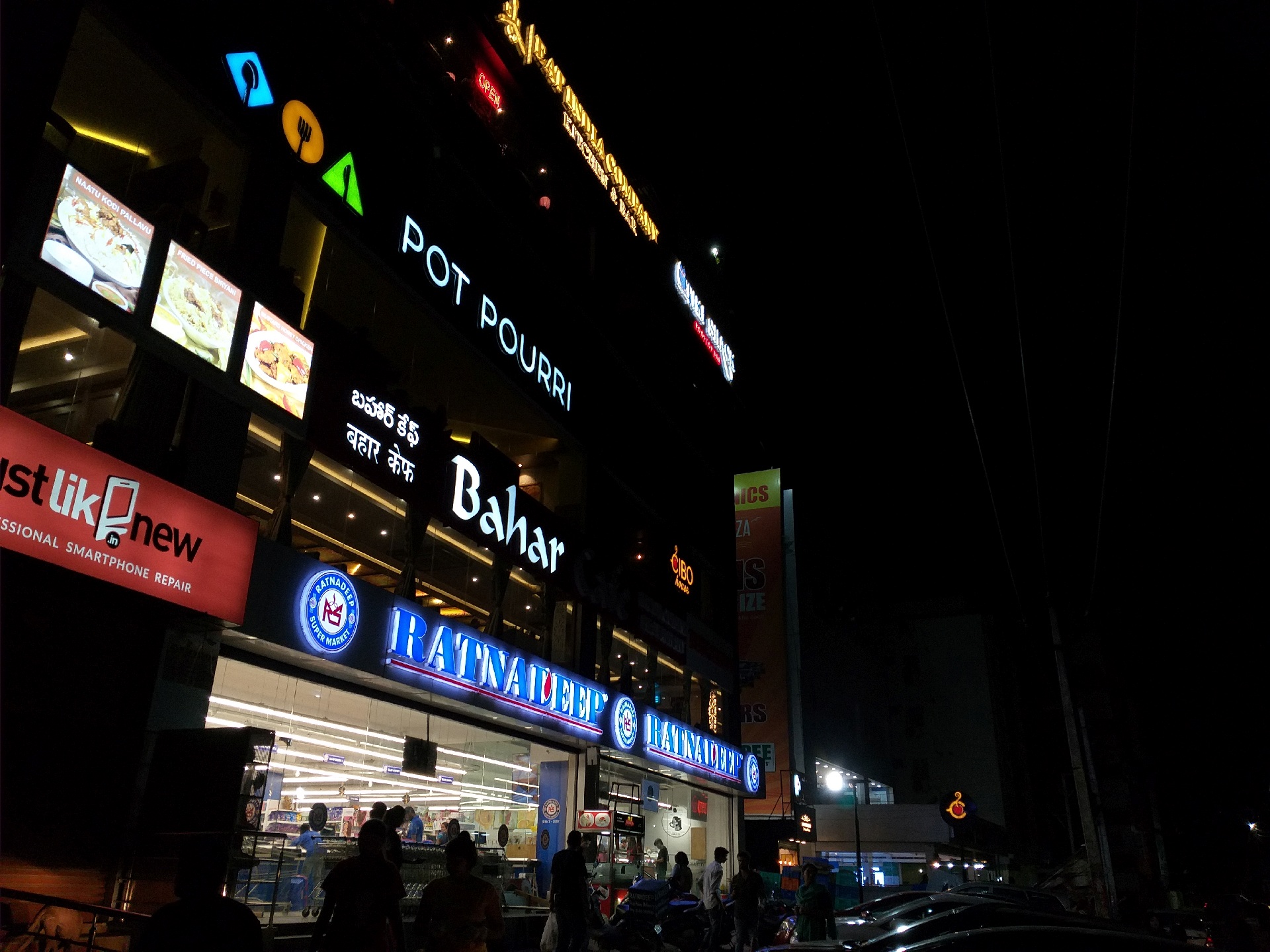







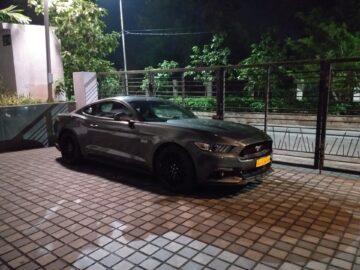







The Galaxy A6+ also supports Live Focus (bokeh) pictures thanks to the secondary 5-megapixel rear camera, and I have to say the results are usually quite good. Edge detection is excellent for the most part, and unless you’re taking Live Focus pictures in poor lighting, there’s a good amount of detail as well. You can adjust the level of background blur after taking pictures, and also refocus on a different part of the picture. As for video recording, the phone captures Full HD videos that are usually quite detailed but suffer from problematic focusing at night and in low-light conditions.







The A6+ gets an older version of Samsung’s camera app despite running Oreo. You have the usual shooting modes, such as panorama, sports, night, and Sound & shot (which adds sounds to an otherwise still picture), and also a basic Pro mode for changing exposure, white balance, and ISO levels. You get a variety of stickers and filters to choose from, and Bixby Vision is also built into the camera app.
Note: The camera samples above have been reduced in size so the page loads quickly. If you want to take a look at the full-resolution samples, check out this Google Photos album.
Performance
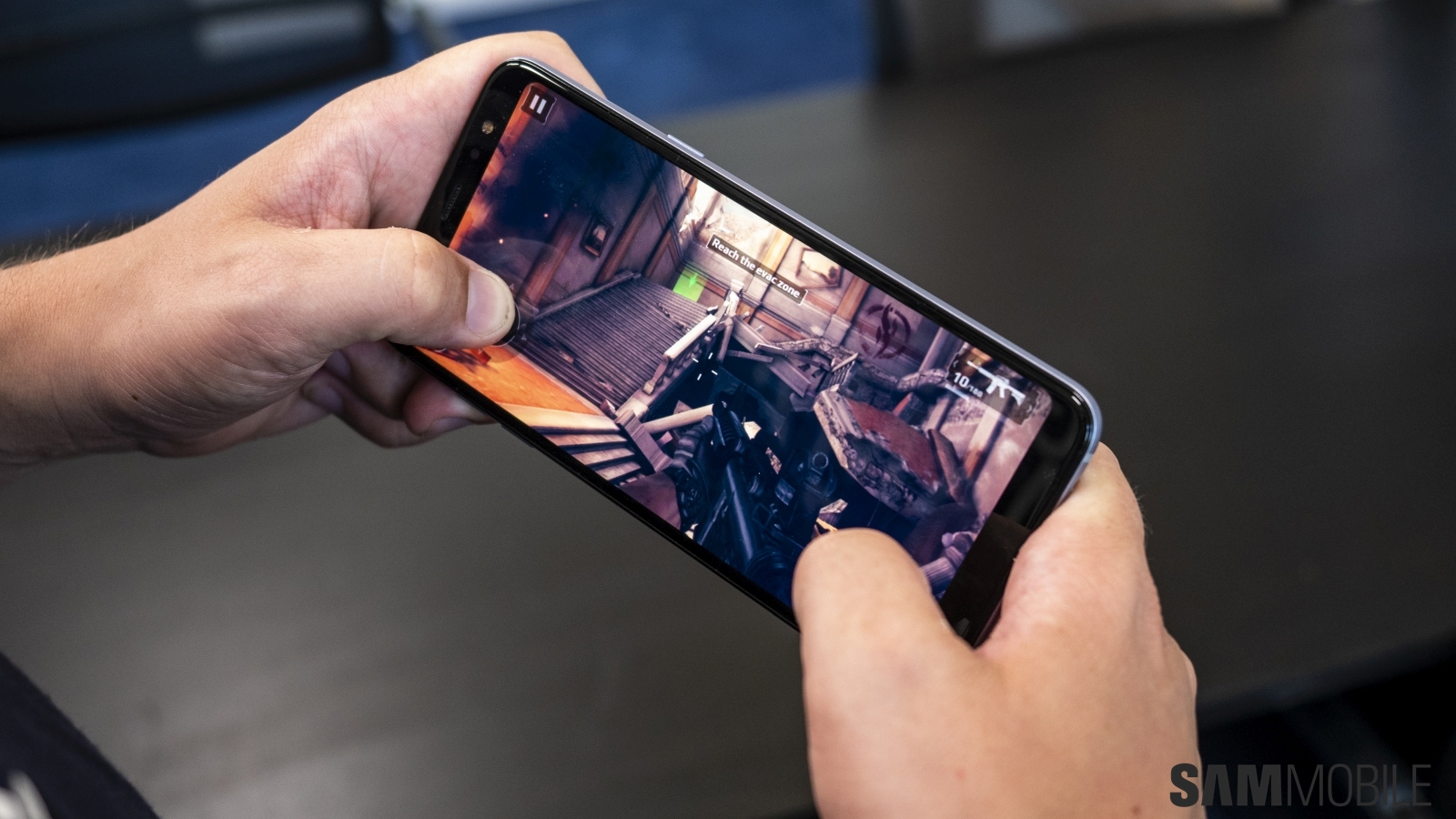
The Galaxy A6+ is powered by the Snapdragon 450 SoC, which simply does not belong on a device that costs almost $400. It has eight Cortex-A53 cores, like Samsung’s own Exynos 7870 (which powered the 2017 iterations of the Galaxy A5 and galaxy A7), with the clock speed going as high as 1.8GHz. But, as I’ve written before, Qualcomm seems to do a better job with its budget and mid-range chipsets than Samsung, which is why the Galaxy A6+ performs admirably in day-to-day usage. This is despite a Full HD display, which Samsung’s Exynos 7870 chip can’t handle as well as similar chips from Qualcomm.
The user interface is smooth for the most part. Stutters only show up when you try to do something too quickly, like switching to the last used app by double tapping the recent apps key, or while opening heavy apps such as the camera. Apps don’t take a lot of time to load, though I can’t say the same about something as simple as the screen waking up after I tap the fingerprint sensor. While it was a quick affair initially, my A6+ review unit now takes up to two seconds to register fingerprint input when it’s locked and the screen is off. I also notice slowdowns after long bouts of uninterrupted use of the phone despite the 4GB of RAM, so it’s clear some optimization is needed.
The A6+ also suffers with graphically intensive games like Modern Combat 5. Lighter games – or something like Asphalt 8, which isn’t as heavy as Modern Combat 5 – run fine, but is that enough for a near-$400 phone? Perhaps a lower screen resolution would have helped in this regard, although that would have meant a poorer viewing experience overall on a 6-inch display. And, well, maybe it’s a good compromise as most consumers tend to play simple games. If you’re interested in playing high-end games, this isn’t the right device for you.
Audio, call quality
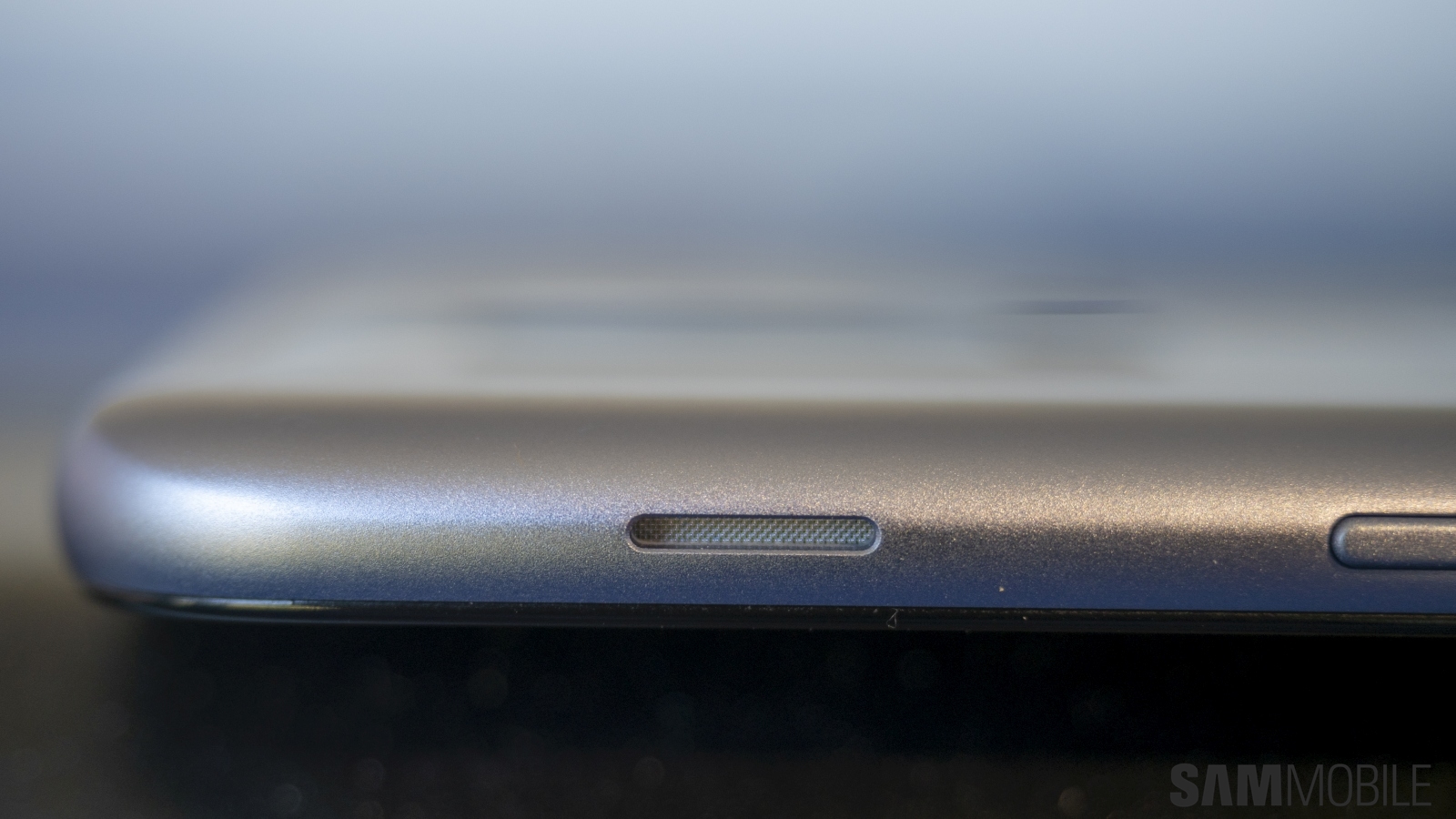
The Galaxy A6+ is one of very Samsung few devices that come with Dolby Atmos support. It works only when you use headphones or play audio via a Bluetooth connection, and the primary difference it makes is to the volume. There’s a slight increase in the volume and an even slighter increase in bass, but it’s not enough to be too useful. Samsung has also bundled low-cost earphones with the phone. Dolby Atmos ends up being less useful than on Samsung’s flagships as a result.
The speaker, placed above the power button, can get loud, but it’s too shrill at the highest volume and lacks depth. As for call quality, the A6+ didn’t disappoint. Network reception is excellent on both SIM slots and in-call volume is loud enough for all but the most noisy environments. Some callers did complain about not being able to hear my voice properly, but this was a rare occurrence and may be limited to our review unit.
Battery Life
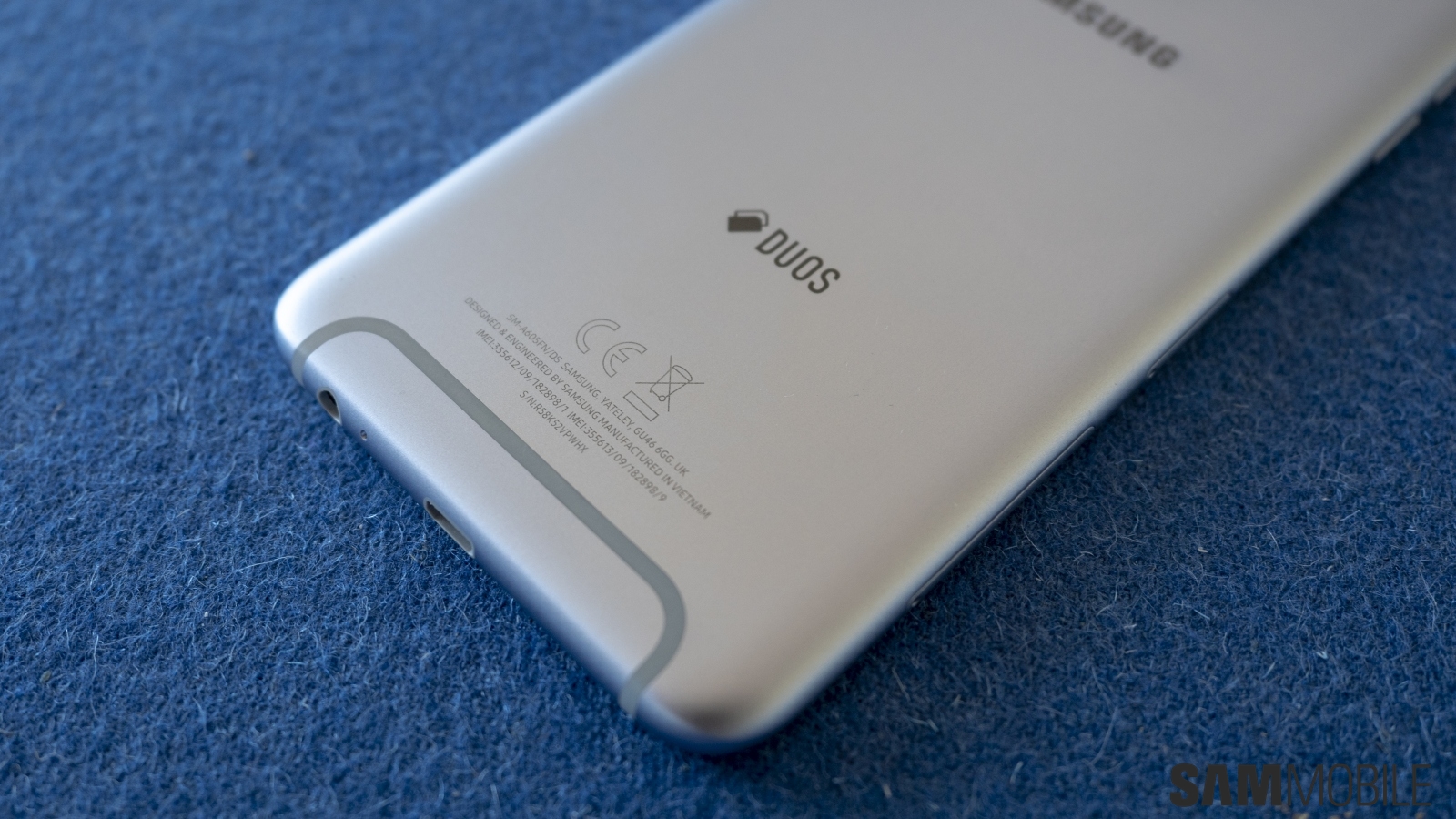
This is one area where the Galaxy A6+ excels. It wasn’t that great in the first couple of days, but once things settled, the Galaxy A6+ constantly made it through a day and a half of regular tasks. By regular, I mean a few hours of sharing memes on Facebook, taking a few pictures, checking out SamMobile’s Slack channel for work, and chatting on WhatsApp all day long. Screen on times regularly touched six hours, and at least five hours with heavier usage. Use it extensively with a mobile data connection, and you’re still looking at four hour screen on times.
But, sadly, the 3,500 mAh battery doesn’t do that well when you throw something like navigation into the mix. Navigation can take a toll on the largest of smartphone batteries, but it is more frustrating with the Galaxy A6+ because it lacks fast charging. That means you can’t quickly top it up after you have subjected it to heavy use. It doesn’t help that charging from 0 to 100 percent takes almost three hours with the default charger, which has the same power rating as those for Galaxy J smartphones (5 volts, 1.55 amperes).
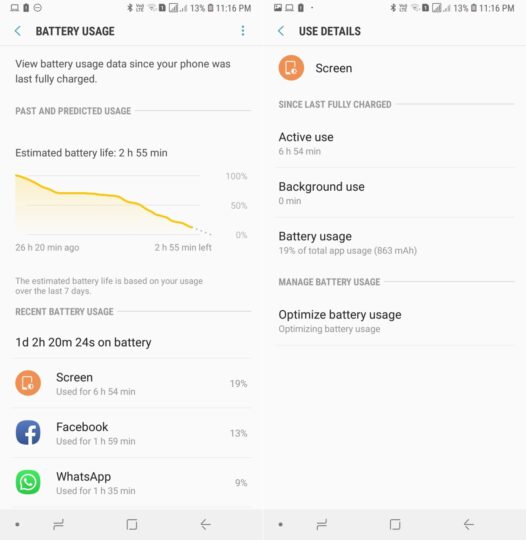
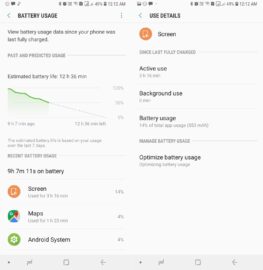
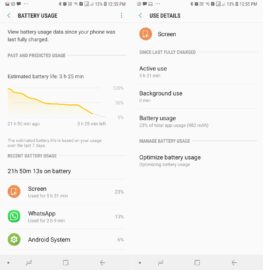
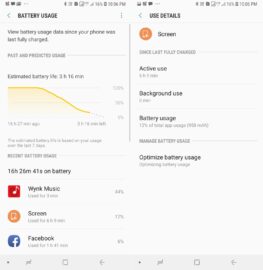
Software
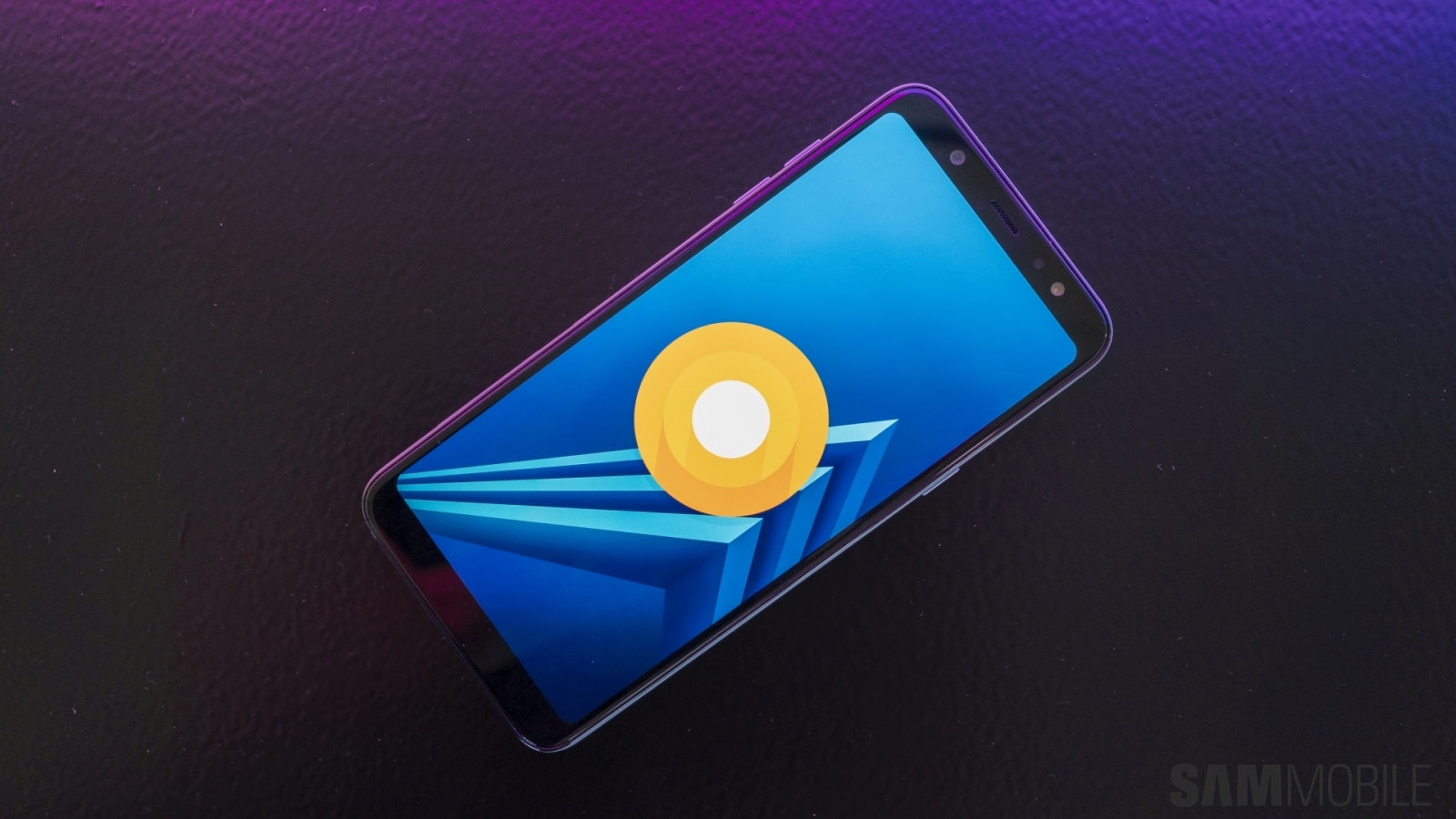
The A6+ runs Android 8.0 Oreo with the Samsung Experience 9.0 UX. It’s more or less similar in terms of features to the Galaxy A8 (2018). You get Always On Display, Dual Messenger, Multi Window multitasking, facial recognition, fingerprint sensor gestures, and Bixby Home and Bixby Vision. The A6+ misses out on Samsung Pay, though. It has Samsung Pay mini if you’re in India, which supports UPI and wallet services like Paytm. Indian consumers also get Samsung Mall, allowing them to shop from various online stores from within a single app.
The A6+ also comes with a feature called Chat Over Video in India. This is an extension of the Pop-up View feature that Samsung phones have had for a long time. When you’re watching a video, Chat Over Video will show you a popup notification for messages received in WhatsApp and the regular SMS app, much like Facebook Messenger’s floating icon. You can reply to those messages without pausing the video using a transparent keyboard. It’s a neat idea, but it can be irritating after a while as WhatsApp and the Messages app remain open as a floating icon even after you’ve stopping watching the video, which you then have to manually close.
In case you’re moving from a Samsung device that ran an OS version older than Android 7.0 Nougat, you will also see a few changes to how the home screen works. There’s no apps button by default, so you have to swipe up or down on the home screen to access the app drawer. You can also set the swipe down gesture to expand the notification shade in the home screen settings, and get the old app drawer button back if you want. There’s an option to disable the app drawer completely and put all apps on the home screen, similar to how it works on the iPhone and Android devices from Chinese OEMs like Xiaomi.
Conclusion
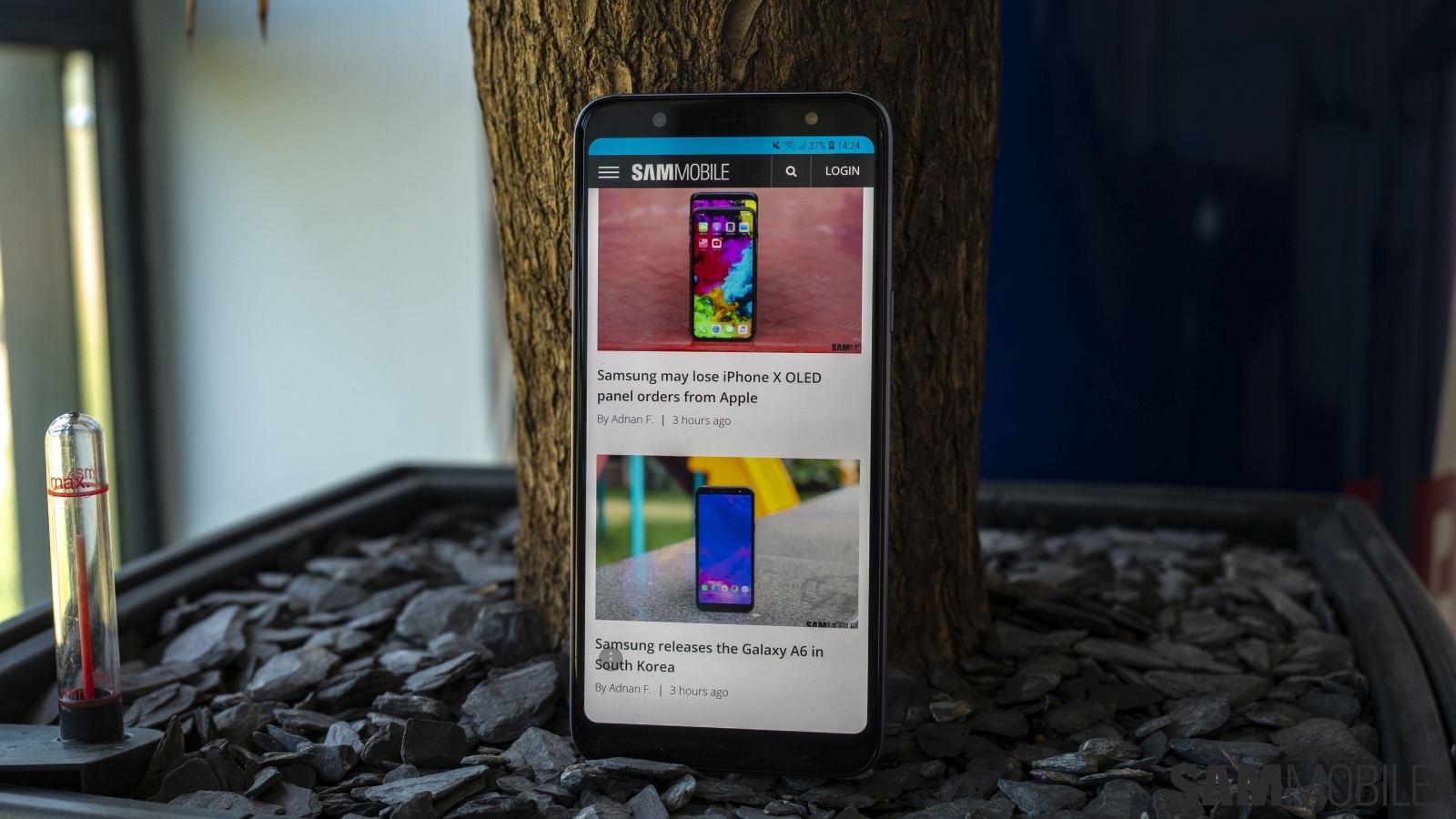
The Galaxy J6 punched above its weight by being better than expected for its price. The Galaxy A6+ is exactly the opposite. It’s a good phone, but at the asking price, it’s not good enough. Other than the less-than-ideal software performance, the A6+ does everything quite well. The 24 MP front camera is impressive, the rear camera takes nice photos, and it has long-lasting battery life.
Even performance isn’t bad when you consider the combination of the Snapdragon 450 and the Full HD display. And speaking of the display, this 6-inch AMOLED panel is excellent, but Samsung needs to shave off a bit more bezel. The takeaway? The Galaxy A6+ is an all-rounder smartphone, but with its current price tag, it’s not an attractive deal. If only Samsung could drop the price by around $50, and this would become an easy recommendation.
| Pros |
Cons |
| Excellent Super AMOLED Infinity display |
Still plenty of bezels |
| Impressive front camera |
Performance inadequate for heavy tasks |
| Dual rear camera performs admirably |
No fast charging or USB Type-C port |
| Performance is good for most use cases |
Fingerprint sensor takes time to wake up device
|
| Long-lasting battery |
Dolby Atmos not very effective |
| Premium feel, blue version is beautiful |
Full Samsung Pay support would be nice to have |
Always On Display, other software features
|
Price needs to be around $50 lower |
The post Samsung Galaxy A6+ review: A good phone let down by its high price tag appeared first on SamMobile.
from SamMobile https://ift.tt/2yTK3pP
via
IFTTT























































